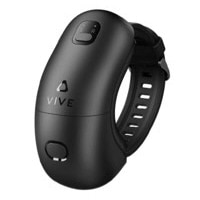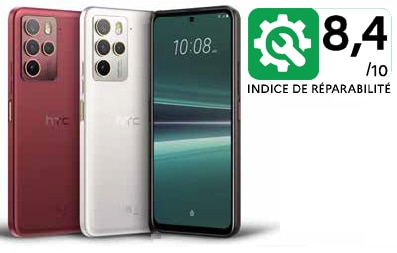Sustainable Design
HTC’s thinking on the development of sustainable products is to starts from the product life cycle, and adopts different measures at various stages through innovative thinking. It uses the concept of The Precautionary Principle to carefully select the ones with lower environmental risks. It complies with the internationally Restriction of Hazardous Substances Directive, and develops sustainable products that are more environmentally friendly.
HTC proactively seeks to reduce the use of environmentally harmful substances, through a design concept that can increase the recycling rate, increase resource reuse, and reduce its negative impact on the environment. In order to achieve the goal of sustainable product design, we develop the whole process from carbon reduction development technology to resource recycling from the perspective of the whole product life cycle to achieve the goal of low-carbon products. At present, we mainly focus on modular design, enhancement of energy efficiency, recyclability design, and reduction of hazardous substances in the sustainable design practice of products, so as to enhance the green competitiveness of products. Through these initiatives, we are committed to creating more environmentally friendly and sustainable products.

Modular Design
The VIVE XR Elite headsets have a detachable battery, which allows users to easily replace the battery by themselves rather than having to discard the whole device. This not only extends the product’s usable lifespan but also reduces waste and optimizes usage of nonrenewable resources. In addition to battery modules, peripheral accessories related to HTC VIVE products will also develop in the direction of modular design in the future, which not only has the potential for customization, but also allows accessories to be repaired independently, improving product quality and maintainability. These advantages not only help improve the competitiveness of products, but also help reduce environmental impact.

Enhancement of Energy Efficiency
We concentrate on energy-saving from the early design and R&D phase. All power supplies used for HTC products must comply with the relevant international energy consumption specifications, including California Energy Commission (U.S.), EU ErP Eco-design Directive and are approved with energy efficiency verification by third-party verification companies. All of their energy efficiency meets the United States Department of Energy criteria of Level VI which is the highest and defines the standby power shall be less than 0.1W. The lowest consumption of currently use chargers is 0.025W, which is much lower than the standard by 75%. The power adapters that HTC uses are already compliant with the new version of the EU Regulation for External Power Supplies (EU 2019/1782), which requires the introduction of mandatory labeling and energy efficiency testing result documents.
We refer to the regulations of the U.S. Department of Energy and Natural Resources Canada as standards to reduce the energy consumption of the battery charging process. This is used to improve the charging efficiency of our products and thus reduce the ongoing energy loss after a full charge. Not only can the energy consumption of the whole product be minimized, but also the goal of energy conservation and carbon reduction can be achieved.
Product Recyclability Design
HTC takes waste deduction and resource reuse into consideration from the first stages of product R&D. We evaluate the product design of recycling thoroughly through product breakdown and material simulation, and estimate the material composition and relative recycling rate of products. The third-party authorities verify the material recycling rate by disassembling and analyzing the products. And the recycling rate of all our products, including VR and smartphones, is largely exceeding to the standard of the product category set by the EU WEEE regulations (55%). In the future, as a principle, we will continue to design our new products in the direction of decreasing the weight and increasing the recycling rate. From products to accessories, HTC also thinks about recyclable designs in accessories to achieve sustainable and low-carbon emissions. In the past, we used plastic material to wrap and fix the wire, but in 2023, we have introduced a material fixing method using paper rings.

|
|
VIVE's next-generation VR headset VIVE XR Elite weighs only 92 grams more than its predecessor, which not only does not affect the convenience of wearing, but also greatly improves the specifications of the hardware, bringing consumers better control and a more amazing virtual and real experience. In terms of recycling rate, the percentage of recyclable materials can reach 76.7% after actual dismantling and testing by a third-party laboratory, which is 39.5% higher than the recycling standard of WEEE.
|

|
|
The VIVE Ultimate Tracker is an all-in-one device that allows consumers to track their head, hands, feet, and waist at the same time, and is designed with continuity and compatibility in mind. This external accessory is compatible with VIVE XR Elite, VIVE Focus 3, and select third-party PC VR headsets. Through its compatibility with different product ranges, VIVE Ultimate Tracker extend the life of their devices and incorporate circular economy concepts into virtual reality technology. More than half of the components are compatible with the previous generation of products, reducing the waste of maintenance materials and resource consumption, and further promoting the effective use and recycling of resources.
|

|
|
In the case of the VIVE wrist tracker, not only have we made improvements in specifications and functionality, but we have also achieved a significant reduction in weight, reducing it by 78.20% compared to the VIVE Focus 3 controller. This not only ensures convenient and flexible use for our customers but also embodies the concept of environmentally sustainable design, promoting lightweight product and enhancing recyclability.
|

|
|
The new U23/ U23 pro phone product still features a design with a high recycle rate. In relation to legal compliance, the product received a 8.4 green label in the most recent Repairability Index for France (2022 Desire 22 pro pro is 7.5). HTC smartphones scored high in the ratings of five criteria: manufacturing documentation, disassembly, availability of spare parts, price of spare parts, and repairs. The product has a longer life span and a highly rated repair service. All these efforts contribute to reducing product waste and promoting environmental protection, thereby mitigating the potential impact on the environment caused by the use of end products.
|

Hazardous Substance Management
HTC HSPM Policy:Design and Manufacture Green Products, Meet Regulations and Customer Requirements, Continuous Improvement to Protect the Environment.
Always taking environmental protection and consumer health as integral factors of our consideration, we strictly adhere to the Restricted Substances List in all our product designs. This list encompasses international environmental regulations and customer requirements, which not only restricts the ten substances regulated by RoHS, but also prohibits the use of toxic substances such as polyvinyl chloride and brominated flame retardants. We require suppliers to submit testing reports and continuously monitor regulatory changes to ensure a pollution-free production that aligns with our environmental goals. We also demand that our suppliers comply with relevant regulations to safeguard consumer health and the environment.


Active in Compliance with Standards
All HTC products are verified by international public certification companies, such as SGS, TUV, and ITS. Chemical analysis is carried out to ensure compliance with the EU environmental directives. In addition, HTC has updated to the latest version of IEC62368 for all products in the market with CB certificates provided. By adhering to the concept of precautionary principle, we comprehensively regulate the known hazards of our products to provide a higher level of safety in their use.